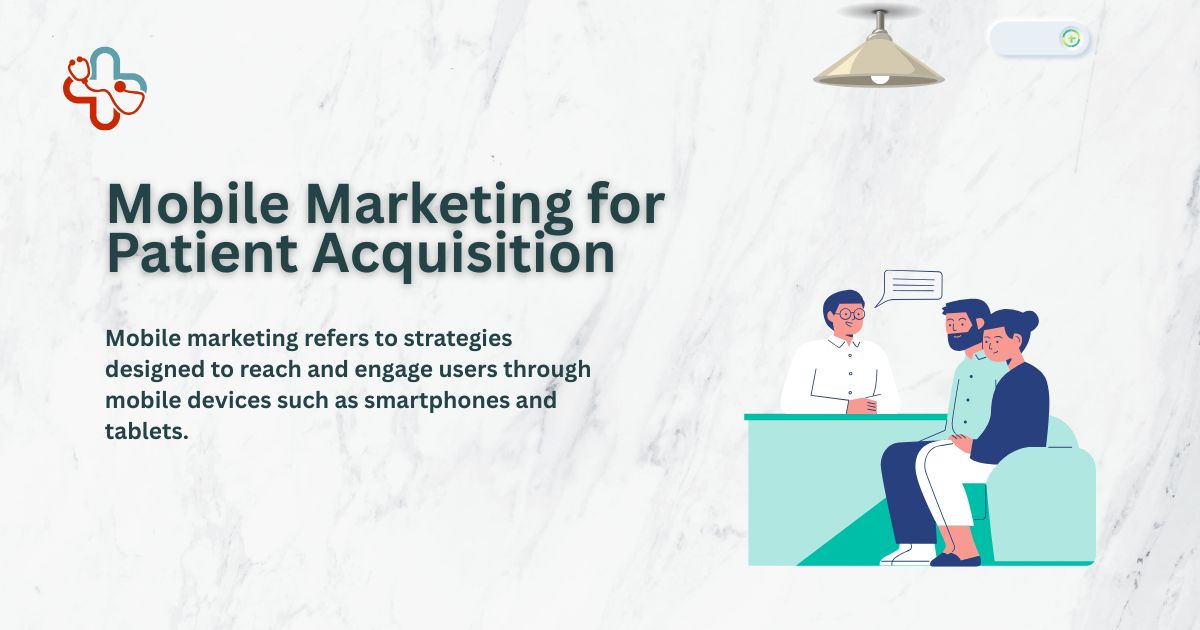
With mobile devices now serving as the primary gateway to information, healthcare providers must optimize their marketing strategies to connect with patients where they spend the most time—on their smartphones. This is where mobile marketing for patient acquisition becomes not just a tactic but a necessity.
This comprehensive guide explores the role of mobile marketing in attracting and retaining patients. We will break down actionable strategies, industry best practices, and optimization techniques to help healthcare providers tap into the mobile-first world effectively.
Understanding Mobile Marketing in Healthcare
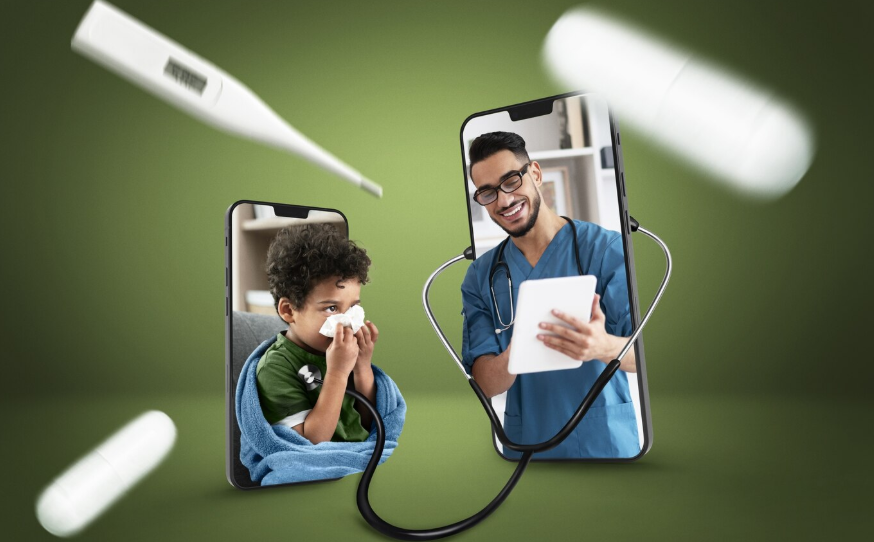
Mobile marketing refers to strategies designed to reach and engage users through mobile devices such as smartphones and tablets. In the healthcare industry, this includes everything from SMS appointment reminders and click-to-call ads to location-based targeting and mobile-friendly websites.
What makes mobile marketing essential for patient acquisition is its ability to deliver personalized, immediate, and location-aware messages that match the way modern patients search for care.
Why Mobile Marketing Matters in Patient Acquisition
The shift to mobile is no longer a trend—it’s the standard. Studies show that over 60% of health-related searches happen on mobile devices. Patients are increasingly using mobile platforms to research symptoms, find nearby clinics, read reviews, and book appointments.
Key reasons to invest in mobile marketing include:
- Increased patient accessibility
- Improved appointment booking rates
- Enhanced brand visibility in local searches
- Higher engagement through SMS and push notifications
- Better tracking and personalization capabilities
By integrating mobile into your patient acquisition strategies funnel, you align your outreach with patient behavior and expectations.
Optimize Your Website for Mobile-First Experiences
The foundation of mobile marketing is a mobile-optimized website. Your website is often the first impression potential patients get. If it loads slowly, displays poorly, or is hard to navigate on mobile devices, visitors will leave and seek care elsewhere.
Essential mobile website optimization tips:
- Use responsive design that adapts to all screen sizes
- Minimize page load times to under three seconds
- Simplify navigation with large buttons and intuitive menus
- Include a click-to-call feature for quick appointment setting
- Make online forms and booking tools mobile-friendly
These improvements not only enhance user experience but also boost your ranking in mobile search results, improving your visibility to new patients.
Leverage Mobile Search Advertising for Local Visibility
Paid search advertising is highly effective for mobile patient acquisition, especially when combined with local targeting. Mobile users often search for immediate care solutions, such as “urgent care near me” or “walk-in clinic open now.”
Key strategies include:
- Use geo-targeted Google Ads to appear in searches within your service area
- Optimize ad copy with mobile intent phrases like “book now” or “call today”
- Utilize ad extensions to include your phone number and location
- Schedule ads during peak patient search times for higher visibility
By targeting high-intent mobile searchers with localized ads, healthcare providers can reach potential patients when they are most likely to act.
Build a Robust SMS Marketing Strategy
SMS marketing is one of the most direct and effective mobile marketing tools for healthcare. It enables timely communication and keeps your practice top-of-mind for current and prospective patients.
Effective uses of SMS marketing include:
- Appointment reminders and confirmations
- Follow-up care messages
- Health tips and service promotions
- Patient satisfaction surveys
- Referral and review requests
When executed properly, SMS campaigns deliver high open and response rates while fostering patient engagement and loyalty.
Implement Click-to-Call and Mobile Booking Features
In the mobile environment, convenience is king. Enabling features like click-to-call buttons and mobile booking capabilities simplifies the path to care for prospective patients.
Best practices for mobile conversions:
- Prominently display your phone number as a clickable link
- Integrate mobile scheduling tools directly into landing pages
- Allow patients to book appointments without creating accounts
- Minimize the number of clicks required to complete a booking
These features streamline the patient journey and significantly increase conversion rates from mobile visitors.
Use Location-Based Marketing and Geofencing
Location-based mobile marketing allows you to target patients in specific geographic areas, increasing relevance and reducing ad spend waste.
Geofencing is a technique that triggers ads or messages when users enter a predefined area—such as near your clinic or a competitor’s facility.
Benefits of geofencing in healthcare include:
- Reaching nearby patients actively searching for care
- Promoting walk-in availability in real time
- Encouraging return visits and follow-up care
- Increasing visibility during health fairs or events
Combined with mobile search ads, geofencing enhances local patient targeting and acquisition.
Develop Mobile-Friendly Content and Educational Resources

Content remains a powerful marketing tool, but in mobile environments, it must be concise, accessible, and visually engaging.
Create content that aligns with mobile consumption habits:
- Short-form blog posts optimized for small screens
- Infographics and video snippets on health tips
- Mobile-optimized email newsletters
- FAQs and patient guides with collapsible sections
Use plain language, avoid medical jargon, and ensure all content formats well on mobile devices. Educated patients are more likely to engage with your services and trust your expertise.
Enhance Reputation Through Mobile Review Generation
Online reviews influence patient decisions, especially in mobile searches. Most patients read reviews before choosing a healthcare provider.
How to generate mobile-friendly reviews:
- Prompt review requests via SMS or after-visit emails
- Include direct links to Google or review platforms
- Ask for feedback shortly after the appointment when the experience is fresh
- Monitor and respond to reviews to show attentiveness
A steady stream of positive mobile reviews boosts your local SEO and establishes trust with prospective patients.
Personalize Mobile Campaigns with Patient Data
Personalization is key to successful mobile marketing. By leveraging patient data responsibly, providers can create targeted campaigns based on demographics, behavior, and medical needs.
Personalized mobile marketing may include:
- Health reminders based on patient age or history
- Service recommendations following recent visits
- Custom landing pages based on search behavior
- Tailored ads reflecting location or appointment frequency
Always follow privacy regulations like HIPAA when handling patient information, and use personalization to create value-driven mobile experiences.
Integrate Mobile with Omnichannel Patient Acquisition
Mobile marketing should not operate in isolation. Instead, it should be part of a broader omnichannel strategy that includes web, social media, email, and offline channels.
Ensure consistency across platforms:
- Use the same branding, tone, and call-to-action
- Track patient journeys from mobile ads to in-office visits
- Align messaging across mobile, desktop, and in-person touchpoints
An integrated approach improves attribution, strengthens brand awareness, and supports continuous patient engagement.
Measure and Optimize Mobile Marketing Performance
To ensure your mobile marketing strategies are effective, establish clear performance metrics and track them regularly.
Key metrics to monitor:
- Mobile traffic volume and bounce rates
- Conversion rates for mobile ads and landing pages
- Cost per acquisition (CPA) from mobile campaigns
- SMS open and response rates
- Appointment bookings originating from mobile sources
Use tools like Google Analytics, ad platform dashboards, and patient scheduling systems to gain insights. Continual optimization based on performance data will yield stronger ROI and better patient outcomes.
Future Trends in Mobile Marketing for Healthcare
Mobile marketing in healthcare is evolving with new technologies and patient expectations. Trends to watch include:
- Voice search optimization for mobile queries
- Mobile apps for patient education and self-service
- AI-powered chatbots for mobile triage and appointment booking
- Predictive analytics for targeting high-intent patients
- Integration with wearable devices and health trackers
Staying ahead of these trends will give healthcare providers a competitive edge in patient acquisition and retention.
Mobile Marketing for Patient Acquisition
The success of modern healthcare marketing hinges on a mobile-first mindset. Patients today expect fast, accessible, and personalized care experiences starting from their mobile device. By optimizing every touchpoint—from search and scheduling to follow-up and feedback—healthcare providers can build trust, enhance convenience, and increase patient acquisition.
To compete in a digital-first world, healthcare organizations must view mobile marketing not as a supplemental tactic but as a core strategy. When executed effectively, it delivers measurable results, strengthens brand loyalty, and connects patients with the care they need—right at their fingertips.















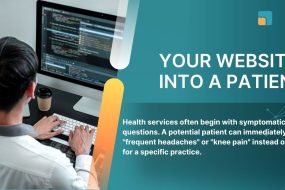
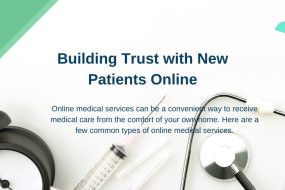
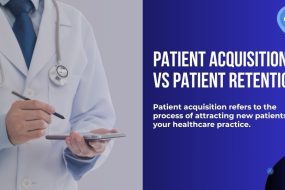
No Comments